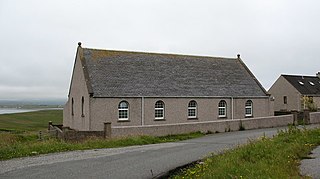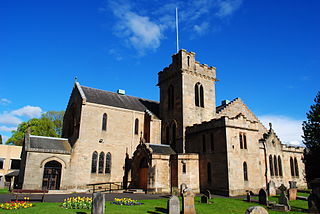Related Research Articles

A parish is a territorial entity in many Christian denominations, constituting a division within a diocese. A parish is under the pastoral care and clerical jurisdiction of a priest, often termed a parish priest, who might be assisted by one or more curates, and who operates from a parish church. Historically, a parish often covered the same geographical area as a manor. Its association with the parish church remains paramount.

In church governance, a diocese or bishopric is the ecclesiastical district under the jurisdiction of a bishop.

Politics of England forms the major part of the wider politics of the United Kingdom, with England being more populous than all the other countries of the United Kingdom put together. As England is also by far the largest in terms of area and GDP, its relationship to the UK is somewhat different from that of Scotland, Wales or Northern Ireland. The English capital London is also the capital of the UK, and English is the dominant language of the UK. Dicey and Morris (p26) list the separate states in the British Islands. "England, Scotland, Northern Ireland, the Isle of Man, Jersey, Guernsey, Alderney, and Sark.... is a separate country in the sense of the conflict of laws, though not one of them is a State known to public international law." But this may be varied by statute.

The biretta is a square cap with three or four peaks or horns, sometimes surmounted by a tuft. Traditionally the three-peaked biretta is worn by Christian clergy, especially Roman Catholic clergy, as well as some Lutheran and Anglican clergy. A four-peaked biretta is worn as academic dress by those holding a doctoral degree from a pontifical faculty or pontifical university or faculty. Occasionally the biretta is worn by advocates in law courts, for instance the advocates in the Channel Islands.

In England, a civil parish is a type of administrative parish used for local government. It is a territorial designation which is the lowest tier of local government. Civil parishes can trace their origin to the ancient system of parishes, which for centuries were the principal unit of secular and religious administration in most of England and Wales. Civil and religious parishes were formally split into two types in the 19th century and are now entirely separate. Civil parishes in their modern form came into being through the Local Government Act 1894, which established elected parish councils to take on the secular functions of the parish vestry.

Ranfurly is a small settlement on the southern edge of the village of Bridge of Weir, which lies within the Gryffe Valley in the council area and historic county of Renfrewshire in the West-Central Lowlands of Scotland.

Knock, from the Gaelic, An Cnoc, is a village in Point peninsula on the Isle of Lewis in the Outer Hebrides of Scotland. Point is connected by road across a narrow isthmus to Stornoway, the main administrative centre of the Western Isles.
A vestry was a committee for the local secular and ecclesiastical government of a parish in England, Wales and some English colonies, which originally met in the vestry or sacristy of the parish church, and consequently became known colloquially as the "vestry". At their height, the vestries were the only form of local government in many places and spent nearly one-fifth of the budget of the British government. They were stripped of their secular functions in 1894 and were abolished in 1921.
Ecclesiastical jurisdiction is jurisdiction by church leaders over other church leaders and over the laity.

New Kilpatrick, is an ecclesiastical Parish and former Civil Parish in Dunbartonshire. It was formed in 1649 from the eastern half of the parish of Kilpatrick, the western half forming Old Kilpatrick. New Kilpatrick is also a disused name for the town of Bearsden.

Langbank is a village on the south bank of the River Clyde in Renfrewshire, Scotland. It is 9.3 miles/15 km northwest from Paisley (Renfrewshire) and 3.4 miles/5.5 km east from Port Glasgow (Inverclyde) on the A8.

Kilmallie is a civil parish in Lochaber, in the west highlands of Scotland. It is centered on the village of Caol, near Fort William and extends to Banavie and Corpach. It gives its name to the local shinty club, Kilmallie Shinty Club as well as two local churches, Kilmallie Free Church of Scotland and Kilmallie Parish Church of Scotland.

Deerness is a quoad sacra parish and peninsula in Mainland, Orkney, Scotland. It is about 13.5 kilometres (8.4 mi) south east of Kirkwall. Deerness forms a part of the civil parish of St. Andrews and Deerness. There is a shop/post office and a community centre and the Deerness Distillery.

Woodside is an area of Aberdeen. It came into existence as a quoad sacra parish within the parish of Old Machar in 1834, under an act of The General Assembly of the Church of Scotland of 31 May 1834, and was named for the principal residence of the area, Woodside House.
Civil parishes are small divisions used for statistical purposes and formerly for local government in Scotland.

The parish with its parish church(es) is the basic territorial unit of the Church of England. The parish has its roots in the Roman Catholic Church and survived the English Reformation largely untouched. Each is within one of 42 dioceses: divided between the thirty of the Canterbury and the twelve of that of York. There are around 12,500 Church of England parishes. Historically, in England and Wales, the parish was the principal unit of local administration for both church and civil purposes; that changed in the 19th century when separate civil parishes were established. Many Church of England parishes still align, fully or in part, with civil parishes boundaries.
A rector is, in an ecclesiastical sense, a cleric who functions as an administrative leader in some Christian denominations. In contrast, a vicar is also a cleric but functions as an assistant and representative of an administrative leader.
Eddrachillis is a civil parish in north-west Sutherland, Scotland. In Gaelic it means: between two firths. For local government, it forms part of the Highland Unitary Authority.

Kilfinichen and Kilvickeon is a civil parish on the Isle of Mull in the county of Argyll, Scotland, part of the Argyll and Bute council area. It is one of three parishes on the island and extends over the south-western part and includes the islands of Iona, Erraid and Inch Kenneth. It is bordered by the parish of Torosay in the north and east. It extends about 23 miles north-east to south-west and is 18 miles wide.

Kilninian and Kilmore is a civil parish on the Isle of Mull in the county of Argyll, Scotland, part of the Argyll and Bute council area. It is one of three parishes on the island and extends over the north-western part. It is bordered by the parish of Torosay in the south-east. It extends about 15 miles north-west to south-east and is 13 miles wide.
References
- ↑ "Frequently Asked Questions - ScotlandsPeople". Archived from the original on 2010-01-14. Retrieved 2010-01-23.
- 1 2 Chisholm, Hugh, ed. (1911). . Encyclopædia Britannica . Vol. 20 (11th ed.). Cambridge University Press. p. 825.